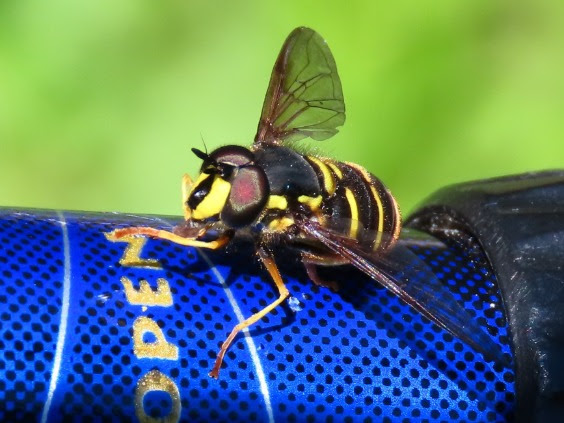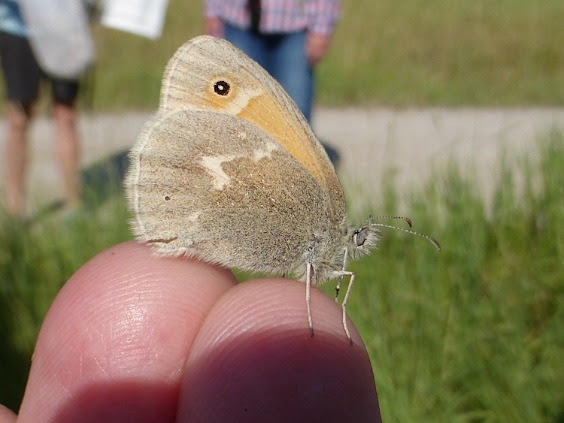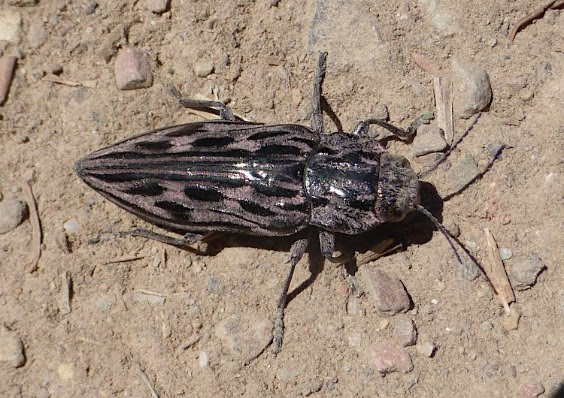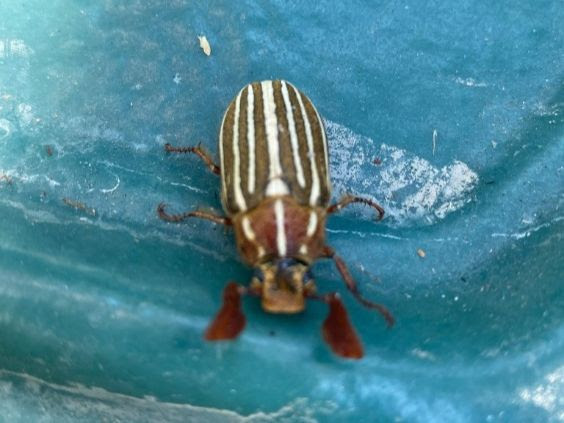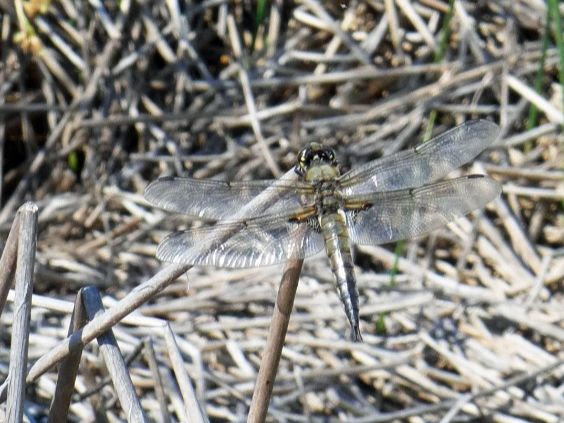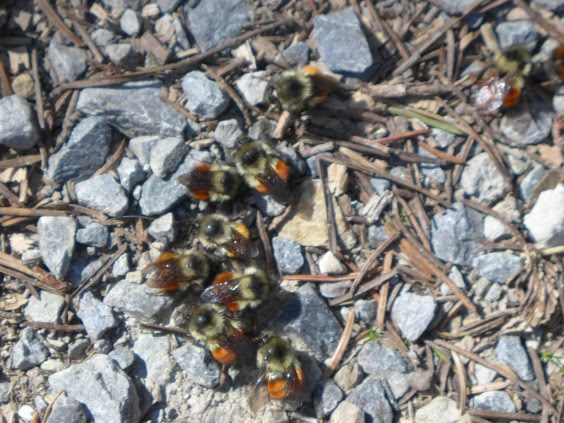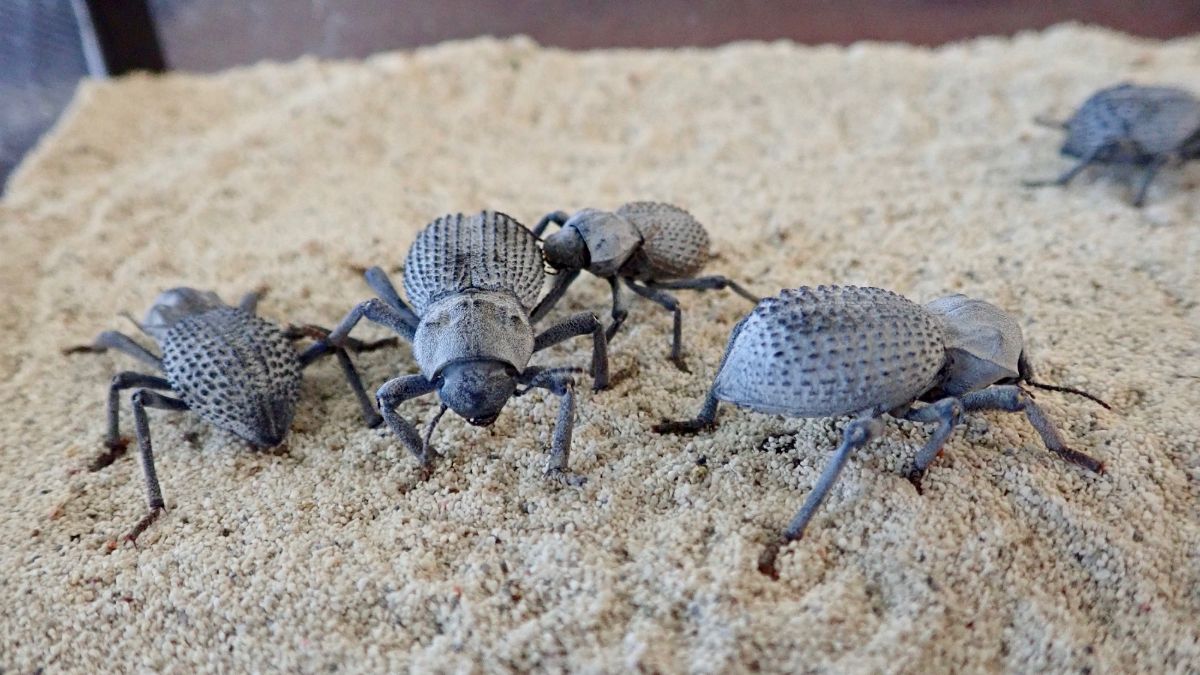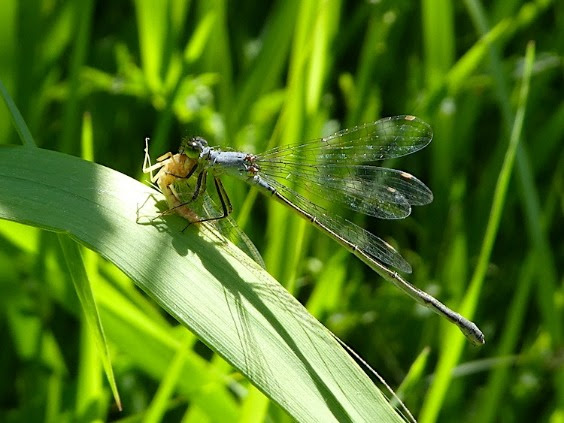If you’re trying to identify a “blue” (subfamily Polyommatinae) make sure to get a photo of their underside, where most of their field marks are… that is, if they’ll let you. […]
Read MoreArticles by: Butterfly House
Western Pond Fly (Sericomyia chalcopyga)
This fly landed on a hiking pole, making for a perfect photo op! The Western Pond Fly is a type of flower fly (family Syrphidae) that does a pretty convincing […]
Read MoreArctic Blue (Agriades glandon)
The last time this butterfly graced a What’s Buzzin’ report (7/25/19) it was found at a much higher elevation …9,200 ft., above treeline, near the top of St. Mary’s Peak in […]
Read MoreCommon Ringlet (Coenonympha tullia)
The eyespot on the underside of the forewing can often help identify this relatively small butterfly, but as with all things, they vary a lot. The color of their wings […]
Read MoreWestern Sculptured Pine Borer (Chalcophora angulicollis)
The Metallic Woodborer Beetle is truly a work of art, with its textured upper side and iridescent bronze luster. An opening of the wings reveals even more beauty. This species was just […]
Read MoreTen-lined June Beetle (Polyphylla decemlineata)
Whether on land or in the air, these up to 1.5 inch long beetles are hard to miss when they are around. When disturbed, they make a hissing sound by […]
Read MoreFour-spotted Skimmer (Libellula quadrimaculata)
Four-spotted Skimmers are one of the earlier dragonflies on the scene. They are quite large, at up to two inches long, and have a diagnostic black spot halfway along each […]
Read MoreBumblebees in the genus Bombus
Peter found these bumbleebees grouped up at the trailhead. He noted that the ground was perfectly dry, but wondered if someone peed there several days before. We don’t usually see bumbleebees […]
Read MoreNotes from the Lab: Blue Death Feigning Beetles
Welcome back to the Lab! As we hit a high point in our summer with both community science projects and our annual summer camps, we now also find ourselves in […]
Read MorePacific Forktail (Ischnura cervula), Female
Damselflies may be smaller, thinner, and weaker fliers than dragonflies, but they have no problem catching lunch — in this case a sizable mayfly. We had difficulty identifying this individual and reached out […]
Read More
